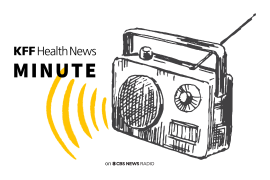Pfizer to Train Physicians in Antiretroviral Treatment in Uganda
The Academic Alliance for AIDS Care and Prevention in Africa announced yesterday the construction of a center in Kampala, Uganda, to train African physicians in administering the "most advanced AIDS drugs available," the Washington Post reports. Pfizer Inc. will contribute $11 million over three years to establish and equip the training center, intended to "begin preparing Africa's woeful health systems for the anticipated infusion of Western assistance in fighting the epidemic," the Post reports. The center, set to open next year, hopes to train 80 African physicians annually and expects those clinicians to "pas[s] on their knowledge" when they return home to their own African nations (Vick, Washington Post, 6/12). Pfizer CEO Henry McKinnell added, "What we do here, we train hundreds, who train thousands, who educate tens of thousands, who treat millions. So there is an opportunity here for this to really succeed" (Tomlinson, AP/Contra Costa Times, 6/12).
Pfizer to Solicit Other Drug Makers
Although Pfizer does not manufacture antiretrovirals, McKinnell, who also is the chair of the U.S. pharmaceutical industry group PhRMA, will solicit AIDS drug makers to donate or discount an additional $50 million worth of antiretrovirals to the program per year. Patients receiving treatment at the center will pay what they can for treatments, but many are expected to pay nothing. "We ... expect to treat up to 50,000 patients with the kind of care that is available in the developed world but not yet widely used in Africa," Nelson Sewankambo, dean of Makerere Medical School, where the program will be located, said. A U.N.- and UNAIDS-operated pilot program in Uganda and three other countries "has provided strong evidence" that medical systems in developing nations can administer antiretrovirals, which require frequent patient blood testing and medication monitoring. Uganda was selected as the training center site because of the government's success in reducing the HIV infection rate from 30% in the early 1990s to less than 10% today (Washington Post, 6/12).






